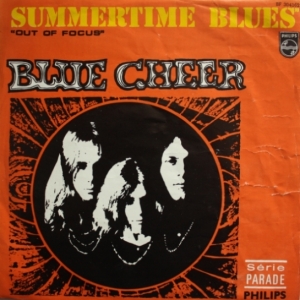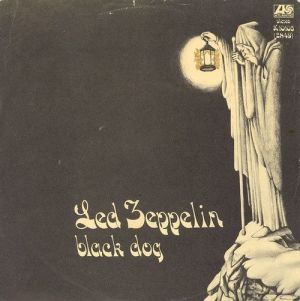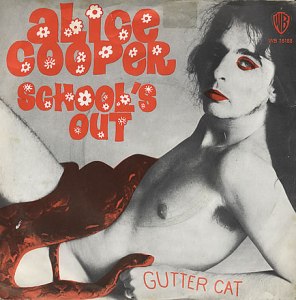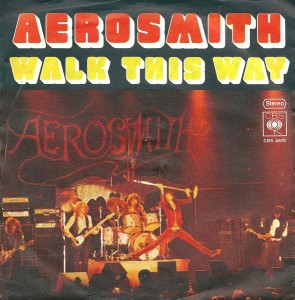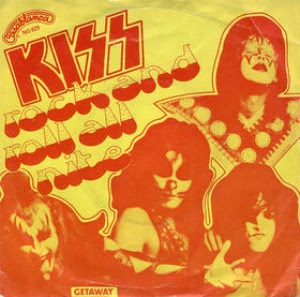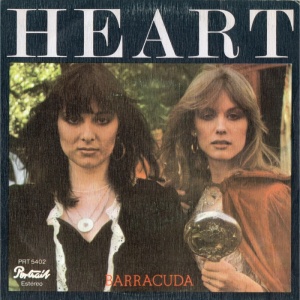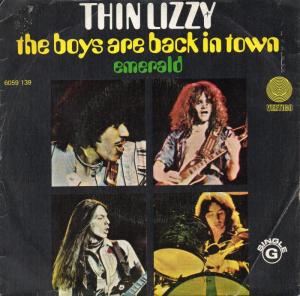If you’re my age, you discovered music on the radio. And, like me, you were probably listening on an AM Top 40 station; in the 1970s, Top 40 radio was almost exclusively found on the AM band. A glance back at the charts from that era reveals a pretty bizarre musical landscape; country music rubbing shoulders with soul and disco, hard funk fraternizing with soft rock, weepy ballads mixing with crunchy hard rock. A little bit of everything could be found on Top 40 radio in the 1970s… And if you were willing, as I was, to listen to 30 minutes of schlock in search of one hard rocking gem, the payoff was worth it.
Placement in the Billboard Top 40 in the 1970s was based on a combination of airplay and sales. Sales were largely driven by airplay; airplay was dictated by what appeared on the charts. Record company manipulation was also a major factor. But however dysfunctional these formulae were, this was the system many of us grew up with, and the way most of us found our music in the 1970s. This was how it was for me, and this is what I found…
If we limit our look back to only the hardest and heaviest tunes ever to rough up the Top 40, there’s still a surprising number that make the cut. Let’s start with The Birth of Heavy, and Blue Cheer’s epic meltdown ‘Summertime Blues’, which peaked at #14 in 1968. This has got to be the heaviest song ever to feature in the Top 20. Also in ’68, Cream made the Top 10 with ‘Sunshine of Your Love’ (#6), Iron Butterfly hit #30 with ‘In A Gadda Da Vida’, and Mountain climbed to #21 in 1970 with ‘Mississippi Queen’. In 1969, Led Zeppelin’s ‘Whole Lotta Love’ made it to #4. Zeppelin continued to appear in the Top 40 into the early years of the 70s; ‘Immigrant Song’/’Hey Hey, What Can I Do’ hit #16 in 1970, ‘Black Dog’ reached #15 in ’71, and ‘Trampled Under Foot’ crept in at #38 in 1975.
While Black Sabbath never achieved Top 40 status with any of their singles, they were there in spirit. Bloodrock’s ‘D.O.A.’ hit #36; a truly unsettling song (at it’s core, it’s a re-write of Black Sabbath’s ‘Black Sabbath’), ‘D.O.A’.’ was banned from many radio stations due to it’s graphically gory lyrics and dark musicality… which only helped boost its popularity. Alice Cooper hit #7 with ‘School’s Out’, another song that radio stations banned. With its subversive lyric, including a line about blowing up a school, it’s doubtful that this song would even be recorded today. The Edgar Winter Group’s monster instrumental ‘Frankenstein’ topped the charts (that’s #1, kids) in 1972. Blue Oyster Cult’s 1976 masterpiece ‘Don’t Fear the Reaper’ (#12) may not qualify as ‘heavy’, but its epic middle section and morbid lyrics certainly do; the song caused a minor uproar when it was (correctly?) labeled a ‘pro-suicide anthem’. This was seriously heavy stuff, kids, and it was also considered pop music.
Deep Purple’s ‘Smoke on the Water’ was only ever released as a single in the ‘double-A-side’ format, with the live version from ‘Made in Japan’ on the A-side and the studio version from the previous year’s ‘Machine Head’ on the B. Released in May of 1973, it climbed to #4; radio stations played both sides. Also in ’73, Rick Derringer’s kick-ass ‘Rock and Roll, Hoochie Koo’ placed at #23, and Sweet’s ‘Ballroom Blitz’ reached #5; Sweet would hit again in 1975 with ‘Fox on the Run’ (#5) and ‘Action’ (#20). Alice came back in ’73 with three Top 40 placings from the ‘Billion Dollar Babies’ album: ‘Elected’ (#26), ‘Hello, Hurray’ (#35) and ‘No More Mr. Nice Guy’ (#25), before a bizarre run of four consecutive Top 40 ballads. Not bizarre because the ballads were bad; bizarre because … he was Alice Cooper. And these were ballads.
Aerosmith were a dominant presence in the Top 40 for a few years, but didn’t exactly play fair… ‘Dream On’ originally peaked at #59 in 1973, but after the success of the ‘Sweet Emotion’ single (#36), Columbia re-released ‘Dream On’ again in 1976, and the song hit #6. ‘Walk This Way’ has a similar history: when originally released in 1975, the single didn’t even chart. In 1976, it was re-released in between the ‘Last Child’ (#21) and ‘Back in the Saddle’ (#38) singles, and this time ‘Walk This Way’ would hit #10. Aerosmith’s last visit to the Top 40 in the 70’s would be with their cover of the Beatles’ ‘Come Together’ (#23) in 1978, from the Sgt. Pepper’s Lonely Hearts Club Band movie soundtrack. Aerosmith would re-appear as chart darlings a decade later, but as a drastically different kind of band (sob).
The Hottest Band in the Land paid frequent visits to the Top 40. Kiss hit #12 in 1975 with the ‘Alive!’ version of ‘Rock and Roll All Nite’, with ‘Shout it Out Loud’ (#31) in ’76, and with ‘Calling Dr. Love’ (#16) and ‘Christine Sixteen’ (#25) in 1977. Two other Kiss singles charted just as high or higher; one was a ballad produced by Bob Ezrin (it worked for Alice). Neither single rocked, so they will not be acknowledged here. For about two years, Foghat were huge; ‘Slow Ride’ (#20), ‘Drivin’ Wheel’ (#34), and the live version of ‘I Just Want To Make Love to You’ (#33) were all over the radio. Heart showed up big with ‘Crazy on You’ (#35) and ‘Magic Man’ (#9) in ’76, and the absolutely awesome ‘Barracuda’ (#11), another solid candidate for the heaviest Top 20 song evah, a year later. Just goes to show: you can’t judge a 45 by its picture sleeve.
I’ll round out our research here with a few more notable one-offs: The manic flute freak-out of ‘Hocus Pocus’ by Focus reached #9 in 1973, BTO’s ‘Let it Ride’ got to #12 in, and ZZ Top’s ‘Tush’ reached #20 in 1975. In 1976, Thin Lizzy broke big with ‘The Boys are Back in Town’ (#12), and Queen’s ‘Bohemian Rhapsody’ topped out at #9. In 1977, Ted Nugent returned to the Top 40 (The Amboy Dukes’ ‘Journey to the Center of Your Mind’ hit #16 in 1968) with ‘Cat Scratch Fever’ (#30), and Ram Jam’s recording of the blues tune ‘Black Betty’ caused the NAACP to call for a national boycott. ‘Black Betty’ hit #17, which seems to indicate that the boycott failed…
It sounds improbable today, but in the 1970s, the place to go to for hard rock and heavy metal was Top 40 radio. In 1978, the Top 40 format began migrating to the FM dial, where singles mingled with album cuts, diluting the power of the ‘Hit Single’. As touring became big business, the hard and heavy bands began working the road the way they had previously worked radio. It was the end of the era when the Top 40 ruled the AM airwaves.
…Until today. The Top 40 format rules the airwaves once again, although these days it seems as though there are only 5 or 6 songs ever aired on the radio, played over and over and over. Today, there is ZERO rock music on Top 40 radio. Kids are finding their rock and metal music on the internet, acquiring it for free, and deleting it when they tire of it. To a child of the 70s sitting on his bed, staring at his battery-powered radio, waiting for the DJ to play ‘Carry on Wayward Son’ (Kansas, #11/’77) again, the music culture of today would seem like pure science fiction.
(Let me know if you think I’ve missed anything; everything that appears here is based on my (subjective) opinion of what constitutes hard rock and heavy metal during this era. Besides the omissions specifically mentioned in the article, some Top 40 singles by Jethro Tull, Queen and Nazareth were left out because imho, they just didn’t ROCK to a sufficient degree.)
